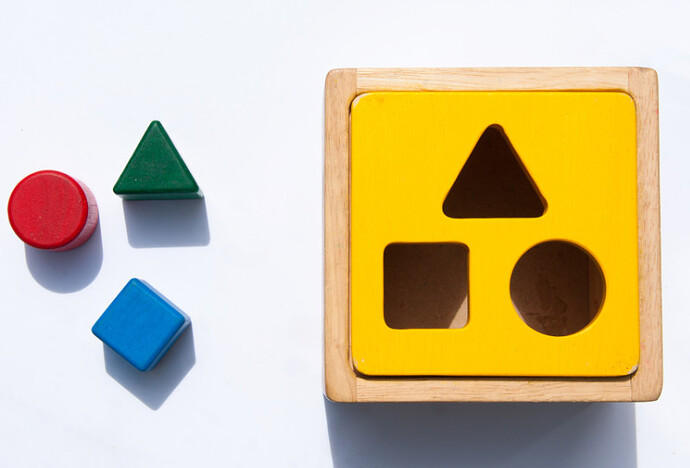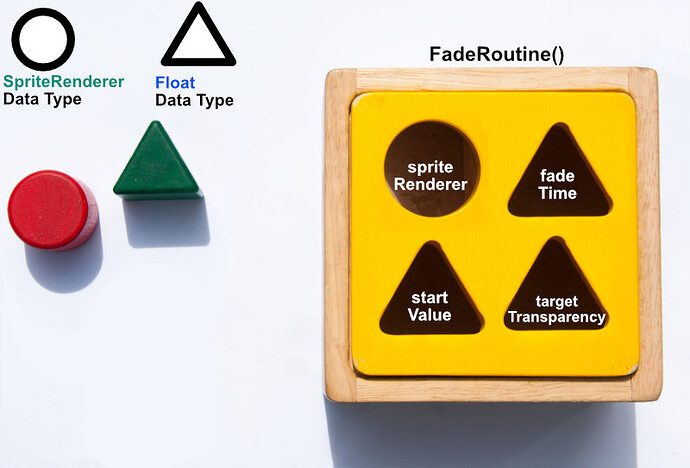Hi all,
When we return targetTransparency and startValue from the CoRoutine, I don’t see where in the code these are defined.
The other two items the CoRoutine is returning (spriteRenderer and fadeTime) are defined in the code, and I was curious about this seeming inconsistency. Does Unity already “know” what startValue and targetTransparency are?
Thanks!
The code attached for those reading without context:
public class TransparentDetection : MonoBehaviour
{
[Range(0,1)]
[SerializeField] private float transparencyAmount = 0.8f;
[SerializeField] private float fadeTime = 0.4f;
private SpriteRenderer spriteRenderer;
private Tilemap tileMap;
private void Awake()
{
spriteRenderer = GetComponent<SpriteRenderer>();
tileMap = GetComponent<Tilemap>();
}
private void OnTriggerEnter2D(Collider2D other)
{
if (other.gameObject.GetComponent<PlayerController>())
{
if (spriteRenderer)
{
StartCoroutine(FadeRoutine(spriteRenderer, fadeTime, spriteRenderer.color.a, transparencyAmount));
}
else if (tileMap)
{
StartCoroutine(FadeRoutine(tileMap, fadeTime, tileMap.color.a, transparencyAmount));
}
}
}
private void OnTriggerExit2D(Collider2D other)
{
if (other.gameObject.GetComponent <PlayerController>())
if (spriteRenderer)
{
StartCoroutine(FadeRoutine(spriteRenderer, fadeTime, spriteRenderer.color.a, 1f));
}
else if (tileMap)
{
StartCoroutine(FadeRoutine(tileMap, fadeTime, tileMap.color.a, 1f));
}
}
private IEnumerator FadeRoutine(SpriteRenderer spriteRenderer, float fadeTime, float startValue, float targetTransparency)
{
float elapsedTime = 0;
while (elapsedTime < fadeTime)
{
elapsedTime += Time.deltaTime;
float newAlpha = Mathf.Lerp(startValue, targetTransparency, elapsedTime / fadeTime);
spriteRenderer.color = new Color(spriteRenderer.color.r, spriteRenderer.color.g, spriteRenderer.color.b, newAlpha);
yield return null;
}
}
private IEnumerator FadeRoutine(Tilemap tileMap, float fadeTime, float startValue, float targetTransparency)
{
float elapsedTime = 0;
while (elapsedTime < fadeTime)
{
elapsedTime += Time.deltaTime;
float newAlpha = Mathf.Lerp(startValue, targetTransparency, elapsedTime / fadeTime);
tileMap.color = new Color(tileMap.color.r, tileMap.color.g, tileMap.color.b, newAlpha);
yield return null;
}
}
}





